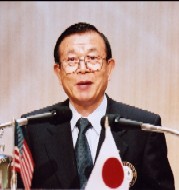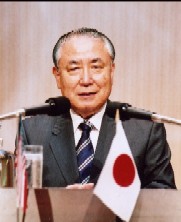Initiation Speech
June 13, 2007
Mr. Gyo Nakayama
Mr. Eijiro Tanaka
 ��Issues in Contracting in the Manufacturing Industry��
��Issues in Contracting in the Manufacturing Industry��
Mr. Gyo Nakayama
Representative Director and President,
Staff Service Eco Systems Co., Ltd.
��Since last year ��disguised contracting�� has been of grave concern in the mass media.
��Disguised contracting is where temporary employment is the reality but no temporary staffing contract exists with the ordering party, making it appear that a temporary staffing firm or an individual is contracting the business.
��In the case of a temporary staffing contract, the ordering party bears joint responsibility with the temporary staff firm for the worker��s work safety, health, etc. The company receiving the worker is required to confirm with the firm dispatching the personnel that the temporary employee has been enrolled in the social insurance system.
��In creating a contract, in principle, the contracted company bears all of the responsibility of employment. It is a contract form that is convenient for the company receiving the personnel.
��In March 2004, the Temporary Staffing Services Law was revised and it became possible for temporary employees to engage in production operations in the manufacturing industry, thus, a labor contract that makes clear the distinction between the two is being sought.
��It is supposed to be clear as to whether a person engaging in production operations is a temporary employee or a contractor under the former Ministry of Labour Ministerial Ordinance No. 37, ��Standards Relating to the Distinction between Temporary Staffing and Contracting�� but in reality this has not been followed.
��In business contracting, a contractor independently assumes some processes in its entirety. Persons engaged as a contractor cannot receive directions or orders regarding such business from employees of the ordering company, i.e. the manufacturer. However, at the actual work site, there are many cases where the employee of the maker issues directions and orders. In such cases, the responsible person and the supervising manager are ambiguous.
��This type of work is deemed to be temporary staffing and companies that are changing the contracting format have been increasing.
��Currently, it is said that there are 1.2 million temporary employees and they are a valuable workforce engaged in manufacturing. Unless employment types such as disguised contracting are eliminated, there will be no stable growth or development of the economy.
 ��New Building System Model for Recycling Society - Container Rental System��
��New Building System Model for Recycling Society - Container Rental System��
Mr. Eijiro Tanaka
Representative Director and President,
Ifco Systems Asia Inc.
��With the growing sense of concern toward environmental issues, the recycling of resources, reduction of waste, and the collection of recyclable items are some of the measures being called for.
��I would like to introduce the container rental system as a new business model for a recycling society.
��In 1993, a new business model was created in Germany��s fruit and vegetable producer industry. It was a business renting plastic containers to transport fruit and vegetable products.
1. The lending company will loan a folding container to the producing region. The rental fee is roughly equal to the cost of purchasing cardboard boxes.
2. The producing region pays the rental fee and a security deposit and packs fruit and vegetable products and ships them to supermarkets and other destinations.
3. The supermarket pays the price of the products together with the container security deposit to the producing region, and after displaying the products as is in the container, returns the container to the lending company.
4. Upon confirming the return of the container from the supermarket, the lending company refunds to the supermarket the security deposit corresponding to the number of containers returned.
5. The returned containers are inspected, washed, and stored according to the size and prepared for the next order.
6. Damaged containers are taken by the lending company and refurbished and revitalized to the original container form.
��This is truly the achievement of the 3R (reduce, reuse, recycle) principles in the recycling society.
��This system is widely spread throughout Europe, in particular in Germany, but in Japan the technology was introduced in 1995 in the form of a joint venture and is beginning to spread in the distribution industry, including the fruit and vegetable industry. As a result, it is starting to be recognized as an effective solution for improving task efficiency and reducing waste.
��Today when environmental issues are being focused upon, I consider it necessary for Japan, which is a leader in energy savings, to examine various business models, select the better models and promote their spread.